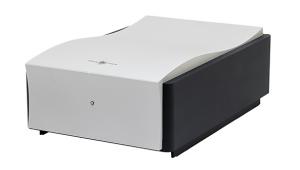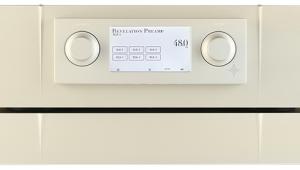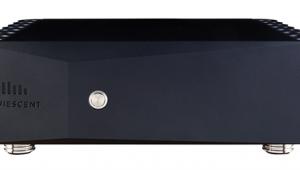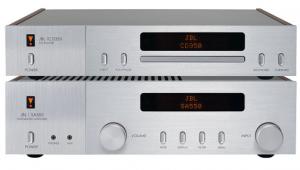Krell Duo 300 (£9500)

Krell’s new iBias range is claimed to be more efficient, or less power-hungry, than pure Class A. Paul Miller suggests that iBias is a modern take on the popular sliding bias circuits of the 1980s. So what is the motivation for it?
Statements from the company suggest that Krell is doing its part to modernise the high-end, to increase its appeal to audiophiles who are not comfortable with bulky intrusions into their living spaces in a manner acceptable in the past. And yet nothing differentiates the Duo 300, physically, from hundreds of other ball-buster amps.
It’s a big, metal-cased block, with the usual back panel fittings. Yes, the styling is tasteful – but there’s only so much you can do with an amplifier’s looks. This is a Krell by any name and any measure. Which is as it should be.
What does differentiate the Duo 300 and its siblings from the mainstream – though other companies are fitting web links, too – is the Ethernet connection, so each amplifier can be accessed on its own web page through any device that can run a browser, eg, an iPad.
The user can then view heatsink temperature, fan speed and other information. This will also provide alerts for conditions like overheating, fan failure and shorting of the output terminals.
Blissful attack
Finding something suitable to play through the Krell for the crucial, initial impression, we chose vinyl in the form of The Band’s eponymous second LP on MoFi. In part, it’s because of the astonishing bass and that incredible drum sound, but primarily because we love the album, period!
The Krell showed blissful attack with authentic decay, and just the right amount of dryness with the percussion that opens ‘Up On Cripple Creek’. It picked up the snap of the percussion, the kick-drum air movement, with true ‘feel’. Yeah, this is a Krell, alright.
But the Duo 300 could turn a bit harsh if driven hard – surprisingly picking up a rasp with Bob Dylan’s Blonde On Blonde [Mobile Fidelity]. It reproduced in-the-room drum sound but noticeably sizzled on The Wonders’ 2CD single ‘That Thing You Do’ [Play-Tone Records]. On the rockier numbers, there was just a trace of sibilance on various Badfinger tracks via Timeless… The Musical Legacy collection [Apple].
Salvation came from Lou Rawls’ At Last [Blue Note], a bit of recording perfection. It was suitably silky, with only a tiny touch of brittleness affecting piano. Rawls’ vocals were languorous perfection, while Dianne Reeves sang as clear as a wine glass from Zalto.
If we seem to lack just a little in enthusiasm here, it’s only because the last Krell product we reviewed blew us away: the astonishing S550i integrated [see HFN Jul ’13].
The Duo 300 is certainly a good amp, but our exposure to assorted Constellation masterpieces and six months with a D’Agostino Momentum Stereo – all much more expensive than a Duo 300 – have altered expectations of modern solid-state amplification, regardless of the Class of operation, price, or any other respects.
Consider, though, that the Duo 300 is an easy product to live with in many ways, not least the cool running and easy set-up. Moreover, there is a bonus for those who harbour insecurities about massive high-end power amps, thanks to its on-line nanny.
Verdict
Assuredly solid-state in its demeanour, Krell’s Duo 300 doesn’t, for a moment, suggest the (sonic) warmth of a true Class A amplifier likes its ancestors … which may be music to the ears of those who can’t abide ‘valveness’. A touch more refinement wouldn’t go amiss, but then: this one is for rockers.
Originally published in the 2014 Yearbook























































